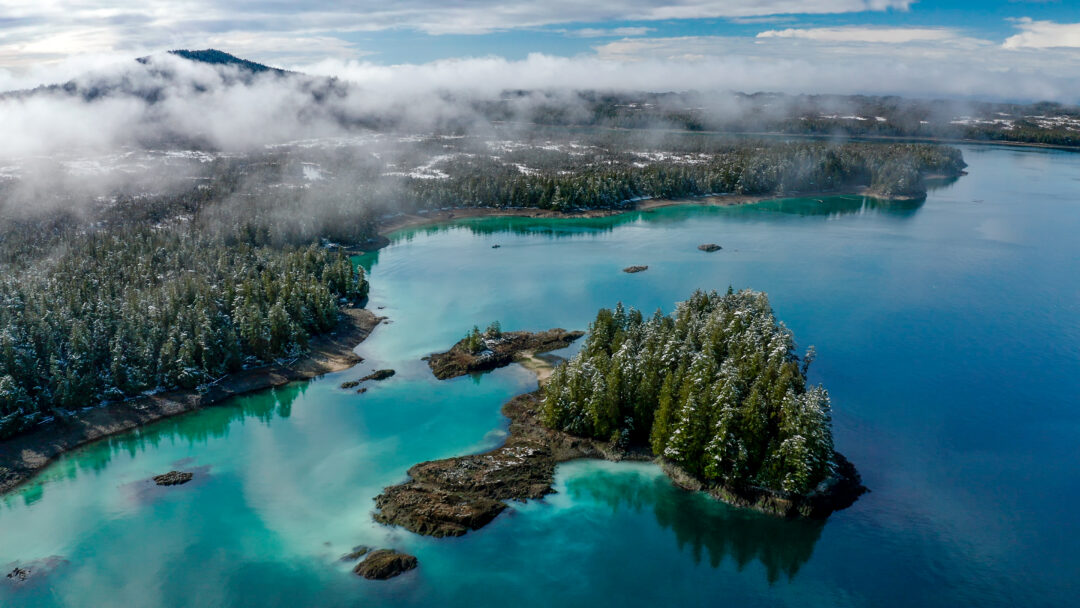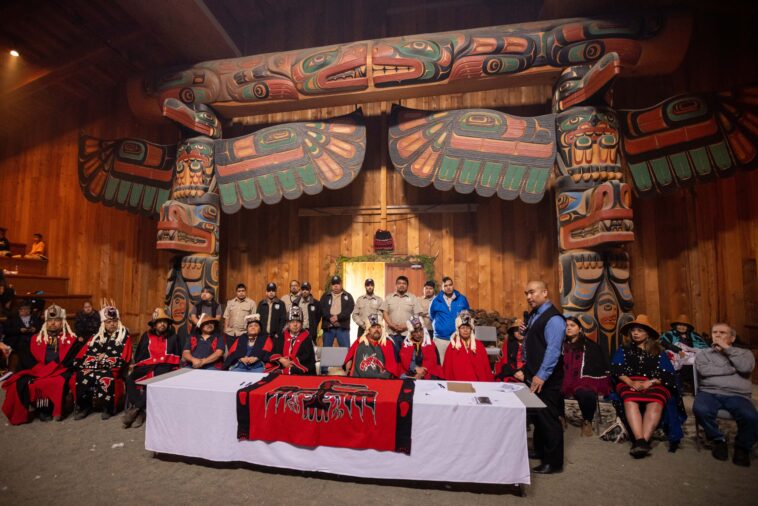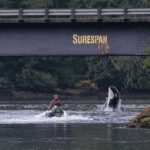The Kitasoo Xai’xais First Nation has just received the prestigious Blue Park Award for exceptional marine conservation of their Gitdisdzu Lugyeks Marine Protected Area (MPA). The award from the US-based Marine Conservation Institute comes with a $8000 (US) prize as well as the honour of joining 30 other Blue Parks around the world that have reached “the highest science-based standards for conservation effectiveness.” The Kitasoo Xai’xais’ MPA along BC’s central coast is both the first Indigenous and first Canadian area to be recognized with the Blue Park distinction.
“Receiving this Blue Park Award not only recognizes what we’ve been doing as a Stewardship Authority, but it also sets the stage for other Indigenous Nations to use this as a blueprint for their own protected areas in their territories,” said Kitasoo Xai’xais elected chief Douglas Neasloss in a statement.
“The management plan for Gitdisdzu Lugyeks combines our traditional knowledge and responsibilities with western science in a way that protects ecosystems and human livelihoods, and we’re grateful that this award recognizes the strength in that combination.”
The Kitasoo Xai’xais Nation unilaterally declared Gitdisdzu Lugyeks as an Indigenous Protected Area on their territory, just north of Bella Bella, in 2022. The designated area spans 33.5 square kilometres, and its ecosystem includes eelgrass meadows and kelp forests, which are crucial spawning grounds for herring and other juvenile fish.

The Kitasoo Xai’xais Stewardship Authority stated the area has been stewarded for generations according to the Nation’s guiding principles: loomsk (respect), sagayt k’uulm goot (interconnectedness), sityaaw (reciprocity), and gugwilx’ya’ansk (intergenerational knowledge).
“First Nations should be leading any conservation measures in their territories and working in collaboration with Canada and British Columbia (i.e. DFO) on any management policies or decisions in their territory.”
Evan Loveless, Stewardship Advisor for the Kitasoo Xai’xais
“Indigenous leadership and stewardship is essential for marine conservation – they know their areas better than anyone and have been doing this for thousands of years,” said Evan Loveless, Stewardship Advisor for the Kitasoo Xai’xais, in an interview. “First Nations should be leading any conservation measures in their territories and working in collaboration with Canada and British Columbia (i.e. DFO) on any management policies or decisions in their territory,” he stated.
Loveless added that the award “validates what we’ve been doing over two decades around management and conservation in the marine space. The Blue Park Award program, with the Marine Conservation Institute, is a pretty rigorous process over two years that includes management, governance, and scientific reviews to get the final accreditation and award,” he explained.
Within the Gitdisdzu Lugyeks MPA, all commercial fishing has been closed with the exception of the harvest of herring spawn-on-kelp for the community’s sustenance, which is done in a sustainable manner. Unlike the herring kill fishery, which takes both fish and eggs, the Kitasoo Xai’xais fishery collects only the eggs off hemlock branches. They follow a “no noise and no blood in the water” harvesting method in order to not scare off the spawning herring.

Regarding compliance with MPA regulations, Loveless explained that “education and voluntary adherence to closures and other management direction will be important.” The Guardian Watchmen are essential to that process, acting as the eyes on the water through their close monitoring and patrols. “Just having their presence is a big deterrent, particularly now that they have the same authorities as a BC Park Ranger,” he added.
This MPA is one of about twenty on their territory that will be part of the marine protected area network across the Great Bear Sea, stretching from Northern Vancouver Island to the border with Alaska. The landmark plan covers nearly 30,500 square kilometres and will revitalize fish stocks, wildlife, and habitats while allowing ongoing fishing in most areas. The area is often called the “Galapagos of the North” because of its distinct and rich biodiversity, including whales, salmon, seabirds, shellfish, eelgrass meadows, and kelp forests.
“We think of protected areas as benefiting everybody: commercial fishermen and recreational fishermen, First Nations’ food fishermen, the conservation of different species. And so we think it’s going to be a win-win for everyone.”
Douglas Neasloss, Kitasoo Xai’xais elected chief
In 2022, The Skeena travelled to Kitasu Bay to visit the Gitdisdzu Lugyeks MPA with elected chief Doug Neasloss. In a full video (available to watch here), he explained that his community has relied on the area as a “bread basket” for sustenance for generations. He feels that Indigenous and Marine Protected Areas are essential tools for food security and sustainable harvesting.
“I don’t think you need to be a rocket scientist to know that if you protect areas, stocks will continue to rebuild,” he says in the video. “We think of protected areas as benefiting everybody: commercial fishermen and recreational fishermen, First Nations’ food fishermen, the conservation of different species. And so we think it’s going to be a win-win for everyone.”
“Our people have a saying: If you take care of the land, the land will take care of you. And that’s something that’s ingrained in all of our work that we do.”
Douglas Neasloss, Kitasoo Xai’xais elected chief
In the short documentary, he explains the cultural and spiritual importance of the area to the Kitasoo Xai’xais Nation, home to paintings and stone markings going back thousands of years. “Our people have a saying: If you take care of the land, the land will take care of you. And that’s something that’s ingrained in all of our work that we do,” Neasloss concludes.
The Kitasoo Xai’xais’ Blue Park award comes just after new polling research has found 93% of British Columbians view marine conservation as the top priority for the future of the BC coastal economy and 79% – about four in five people – are in support of Marine Protected Areas throughout the Great Bear Sea.




